Episodes
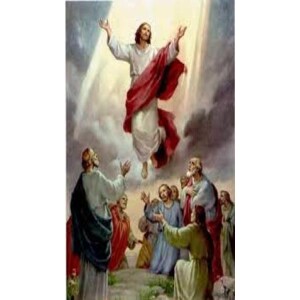
Friday Jul 05, 2024
Friday Jul 05, 2024
“Almighty Father, I place the Precious Blood of Jesus before my lips before I pray, that my prayers may be purified before they ascend to Your divine altar.” Stand In The Gap With Us And Saint Anthony Zaccaria patron saint of physicians. 7/5/2024. Anthony Zaccaria was born in the city of Cremona, Italy, 1502 – 5 July 1539) was an early leader of the Counter Reformation, the founder of religious orders (Barnabites) and a promoter of the devotion to the Passion of Christ, the Eucharist and the renewal of the religious life among the laity.
At the same time that Martin Luther was attacking abuses in the Church, a reformation within the Church was already being attempted. Among the early movers of the Counter-Reformation was Anthony Zaccaria.
In 1527, he started studying for the priesthood, and continued his theological studies in Bologna. On February 20, 1529 Zaccaria was ordained a priest in the Chapel of Saint Joseph in Cremona Cathedral.
Zaccaria was occupied with preaching in churches and on street corners. In August 1531 he (Milan). Zaccaria revived the custom of ringing church bells at 3 p.m. on Fridays, in remembrance of the passion and death of Jesus.
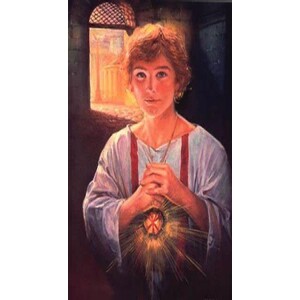
Wednesday Jul 03, 2024
Wednesday Jul 03, 2024
Stand In The Gap With Us And The Apostle St. Thomas 7/3/2024. Veronica was very devoted to the Eucharist and to the Sacred Heart. She offered her sufferings for the missions, died in 1727, and was canonized in 1839. Her Liturgical Feast Day is July 9.
She was the youngest of seven sisters, three of whom embraced the monastic life. It is told that at the age of three years Giuliani supposedly began to show great compassion for the poor. She would set apart a portion of her food for them, and even part with her clothes when she met a poor child scantily clad. Her mother died when Ursula was seven years of age.
At the age of 16, she experienced a vision which correctedher imperfections of character: she saw her own heart as a "heart of steel". In her writings she confesses that she took a certain pleasure in the more stately circumstances which her family adopted when her father was appointed superintendent of finance at Piacenza.
When Giuliani came of age, her father believed she should marry, and so he desired her to take part in the social activities of the young people. But she pleaded so earnestly with her father that, after much resistance, he finally permitted her to choose her own state in life.
Veronica’s desire to be like Christ crucified was answered with the stigmata.
Giuliani had a lifelong devotion to Christ crucified that eventually became manifested in physical signs. The marks of the crown of thorns appeared on her forehead in 1694 and the five wounds on her body in 1697.
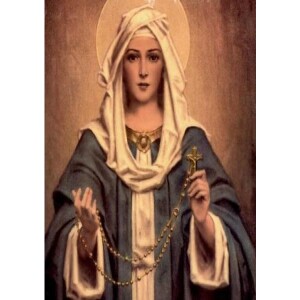
Tuesday Jul 02, 2024
Tuesday Jul 02, 2024
Stand In The Gap With Us And Saint Oliver Plunkett 7/2/2024. “Almighty Father, I place the Precious Blood of Jesus before my lips before I pray, that my prayers may be purified before they ascend to Your divine altar.”
Oliver Plunkett, a 17th-century Irish martyr, became Ireland's first new saint in nearly 700 years after being canonized in 1975. In 1997, he was deemed the country's patron saint for peace and reconciliation.
The English martyred Oliver Plunkett for defending the faith in his native Ireland during a period of severe persecution. Born in County Meath in 1629, Oliver studied for the priesthood in Rome and was ordained there in 1654.
In 1679, Archbishop Plunkett was arrested and falsely charged with treason. This man of peace was accused of plotting to bring 20 000 French soldiers to Ireland. He was taken to London to stand trial and because he was not given time to arrange his defense. Archbishop Plunkett was found guilty and sentenced to death.
The name of today’s saint is especially familiar to the Irish and the English—and with good reason. The English martyred Oliver Plunkett for defending the faith in his native Ireland during a period of severe persecution.
Born in County Meath in 1629, Oliver studied for the priesthood in Rome and was ordained there in 1654. After some years of teaching and service to the poor of Rome he was appointed Archbishop of Armagh in Ireland.
Four years later, in 1673, a new wave of anti-Catholic persecution began, forcing Archbishop Plunkett to do his pastoral work in secrecy and disguise and to live in hiding. Meanwhile, many of his priests were sent into exile, schools were closed, Church services had to be held in secret, and convents and seminaries were suppressed. As archbishop, Plunkett was viewed as ultimately responsible for any rebellion or political activity among his parishioners.

Tuesday Jul 02, 2024
Tuesday Jul 02, 2024
In the Eucharistic Miracle of Herentals Belgium 1412. In the Eucharistic miracle of Herentals, some Hosts that had been previously stolen were found after eight days, and perfectly intact, in spite of the rain. The Hosts were found in a field near a rabbit burrow, surrounded by a bright light and arranged in the form of a cross.
Every year, two paintings of Antoon van Ysendyck, depicting the miracle, are taken in procession to the field where a small shrine, De Hegge, was built. Here a commemorative Mass is celebrated before numerous people. The two paintings are presently kept in the Cathedral of Sint-Waldetrudiskerk, Herentals.
In 1412, a certain Jan van Langerstede went for lodging to a hotel not far from the little city of Herentals.
This professional man was stealing sacred objects from churches and selling them all over Europe.
The day after his arrival at Herentals, he went to the nearby village of Poederle.
He entered the parish church and without being noticed, stole the chalice and the ciborium containing five consecrated Hosts.
As he was returning to Herentals in the place known as “De Hegge” (“the fence”), he felt as if pulled by a mysterious force that was keeping him from continuing his journey.
So he tried to get rid of the Hosts by throwing them into the river, but his every attempt to do so was useless.
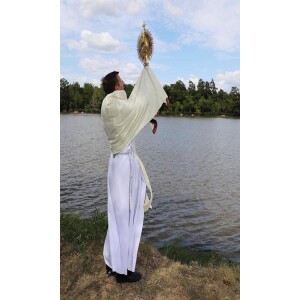
Tuesday Jul 02, 2024
Tuesday Jul 02, 2024
Stand In The Gap With Us And Saint Junipero Serra 7/1/2024. He is patron saint of vocations to Church ministry, and he played an instrumental role in building the Church on the west coast of America when that area was still mission territory.
Junipero Serra was an 18th-century Spanish missionary who is as responsible as anyone else for establishing the Catholic presence in colonial California.
Serra died in 1794, and the one miracle Church authorities have confidently declared he performed was in 1960, when a nun in St. Louis was cured of a mystery disease, thought to be lupus, after having prayed to him on her deathbed.
In 1776, when the American Revolution was beginning in the east, another part of the future United States was being born in California. That year a gray-robed Franciscan founded Mission San Juan Capistrano, now famous for its annually returning swallows. San Juan was the seventh of nine missions established under the direction of this indomitable Spaniard.
Born on Spain’s island of Mallorca, Serra entered the Franciscan Order taking the name of Saint Francis’ childlike companion, Brother Juniper. Until he was 35, he spent most of his time in the classroom—first as a student of theology and then as a professor. He also became famous for his preaching. Suddenly he gave it all up and followed the yearning that had begun years before when he heard about the missionary work of Saint Francis Solano in South America. Junipero’s desire was to convert native peoples in the New World.
Arriving by ship at Vera Cruz, Mexico, he and a companion walked the 250 miles to Mexico City. On the way Junipero’s left leg became infected by an insect bite and would remain a cross—sometimes life-threatening—for the rest of his life. For 18 years, he worked in central Mexico and in the Baja Peninsula. He became president of the missions there.
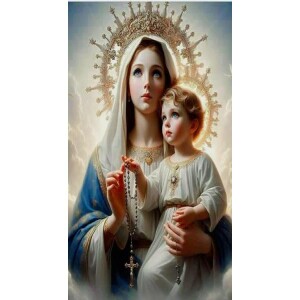
Monday Jul 01, 2024
Monday Jul 01, 2024
Join John Carpenter, Don Hartley, and the Deeper Truth research team as they review the amazing details of the events in Italy in 1944.
As in all Marian events, the most glorious miracle of all generated by the apparition was the grand awakening of the people’s faith. Just from May to July of 1944, a multitude estimated at 3 million (3 million!) flooded the crumbled roads and the precarious railroads of North Italy to Le Ghiaie, to pray at the place where Adelaide saw the Holy Virgin. The pilgrims asked for the safe return of sons and husbands from Russia, for the end of the civil war, for healing of diseases; but most of all they prayed for the conversion of their households.
We have positive evidence of all this because a lot of visitors wrote their prayers on small slips of paper and left them at the apparition spot. A few thousand of them were happily preserved by Don Cesare Vitali, then the parish priest of Le Ghiaie, and lately studied by Ermenegilda Poli who confirmed that two appeals to the Virgin predominate: Bring back my husband/son from the war and convert my father/husband/son to the true religion. The endless processions marched day and night to the tempo of rosary and Marian chants and it is recorded in the newspapers that the bystanders at café terraces stood up and took their hats off at the passage of the pilgrims.
Spring 1944 was a severe war-time period for the North of Italy, with daily air raids, aimed at destroying the heavy war industry, as well as the morale of the population by massive bombing of cities. Nothing happened to Le Ghiaie, nor to any of the pilgrims heading there, though once back home they had to suffer the raids of allied aircrafts. Several times airplanes were seen and heard above the crowd gathered to attend the apparitions, but no harm came to the people.
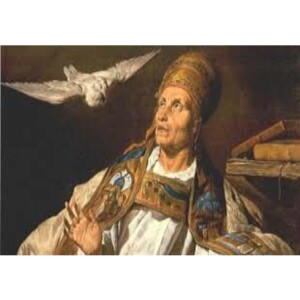
Sunday Jun 30, 2024
Sunday Jun 30, 2024
Stand In The Gap With Us to Honor First Martyrs of the Church of Rome 6/30/2024. The holy men and women are also called the "Protomartyrs of Rome." They were accused of burning Rome by Nero , who burned Rome to cover his own crimes. Some martyrs were burned as living torches at evening banquets, some crucified, others were fed to wild animals. These martyrs died before Sts. Peter and Paul, and are called "disciples of the Apostles. . . whom the Holy Roman church sent to their Lord before the Apostles' death."
The memorial of the First Martyrs of the Holy Roman Church comes one day after the Solemnity of Saints Peter and Paul. The first day, June 29, is the remembrance of the two most famous martyrs who died during the persecution of Nero, St. Peter crucified upside down in 64 AD and St. Paul beheaded in 67 AD.
The Feast of the First Martyrs of the Church of Rome was established after the Second Vatican Council. This feast commemorates the sacrifices made by early Christians after they were blamed for the burning of Rome, during the reign of Nero. For this many Christians were burned alive as candles or killed in the Colosseum to entertain the emperor.
Even after Nero committed suicide, persecution of early Christian still persisted during the early days of the Roman Empire, only ending after the promulgation of the Edict of Milan by Emperor Constantine in 313 AD.

Saturday Jun 29, 2024
Saturday Jun 29, 2024
Stand In The Gap With Us And Saints Peter and Paul 6/29/2024. Peter and Paul are both patron saints of Rome and considered cornerstones of the Church. St. Peter was one of the 12 apostles, as well as the first pope and founder of the Roman Church.
Although different, although distant in history and experience, and despite having clashed with each other precisely because of these differences, Saint Peter and Paul are like complementary brothers, bound by the Gospel of which they were messengers and depositories.
His execution was ordered by the Roman Emperor Nero, who blamed the city's Christians for a terrible fire that had ravaged Rome. Peter requested to be crucified upside down, as he felt unworthy to die in the same manner as Christ.
They constantly witness to us the two necessary elements of our Catholic faith: the service of Church authority (Peter) and the outreach of mission (Paul). That is fitting because we need both their teaching and their grace to guide us in our pilgrimage toward our good destiny.
St. Peter is often represented holding the keys to heaven and hell, which represent the powers of absolution and excommunication.
Peter (d. 64?) Saint Mark ends the first half of his Gospel with a triumphant climax. He has recorded doubt, misunderstanding, and the opposition of many to Jesus. Now Peter makes his great confession of faith: “You are the Messiah” (Mark 8:29b). It was one of the many glorious moments in Peter’s life, beginning with the day he was called from his nets along the Sea of Galilee to become a fisher of men for Jesus.

Friday Jun 28, 2024
Friday Jun 28, 2024
Catching my Second Wind as Biden and John Benko show they both lie and speak falsely agaainst their opponents.
Watching the Presidential Debate last night between President Trump and (President) Biden. The lies of Biden and his accusations are much similar to John Benko who obviously use the same playbook against their oponents. They can't win a debate without their attempts to attack their character.
Growing up an athlete all my life, I've always known the idea of "Second Wind" from personal experience.
In high school, in order to play basketball and baseball, I had to trek nearly 7 miles after practice and games by foot to get home.
That would be in the cold, the rain, snow and heat.
Sometimes it might be late at night and where my Mom's farm was located, it was in the boondocks.
There were no light posts out past the main highway leaving town. Many a time I out run wild dogs, been chased by bears, snakes, and even skunks.
I did this for three years of my high school years. I suppose you can say these years were character builders. I look back today and I am thankful for the experience.
It would help me many times throughout my life. I've had my "Second Wind" many times on a battlefield, explosions with the sounds and cries for "Medic".
I've had my "Second Wind" regarding my holy Catholic Faith as there were times I was hanging on by a scarlet thread.
Only His grace sustained me. Now that I am retired from the Army after 26 years, I am thankful for the past few months preparing me for the next stanza of my life.
I am so thankful to God for his love for me and for his Mother, who is also my Mother. Many times in war when a person is wounded seriously, they will cry out to their Mothers. There is something comforting with
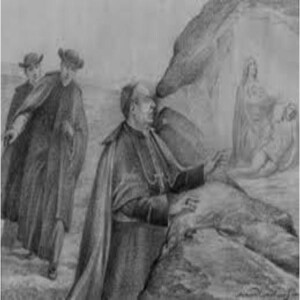
Friday Jun 28, 2024
Friday Jun 28, 2024
Stand In The Gap With Us And Saint Irenaeus Doctor of the Church 6/28/2024. Irenaeus was a Greek from Polycarp's hometown of Smyrna in Asia Minor, now İzmir, Turkey, born during the first half of the 2nd century. The exact date is thought to be between the years 120 and 140.
Unlike many of his contemporaries, he was brought up in a Christian family rather than converting as an adult.
During the persecution of Christians by Marcus Aurelius, the Roman emperor from 161 to 180, Irenaeus was a priest of the Church of Lyon. The clergy of that city, many of whom were suffering imprisonment for the faith, sent him in 177 to Rome with a letter to Pope Eleutherius concerning the heresy of Montanism.
Returning to Gaul, Irenaeus succeeded the martyrSaint Pothinus and became the second bishop of Lyon.
